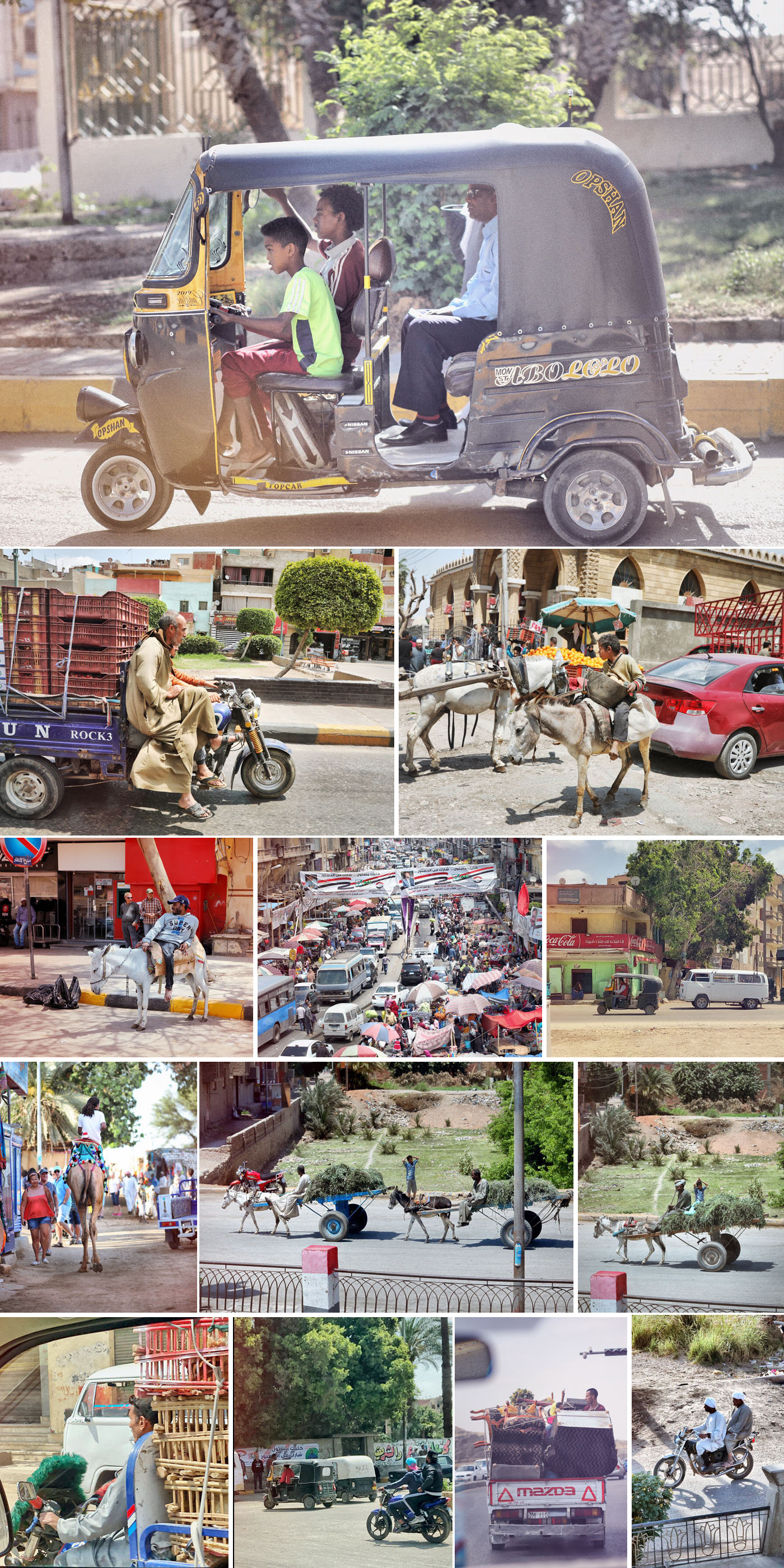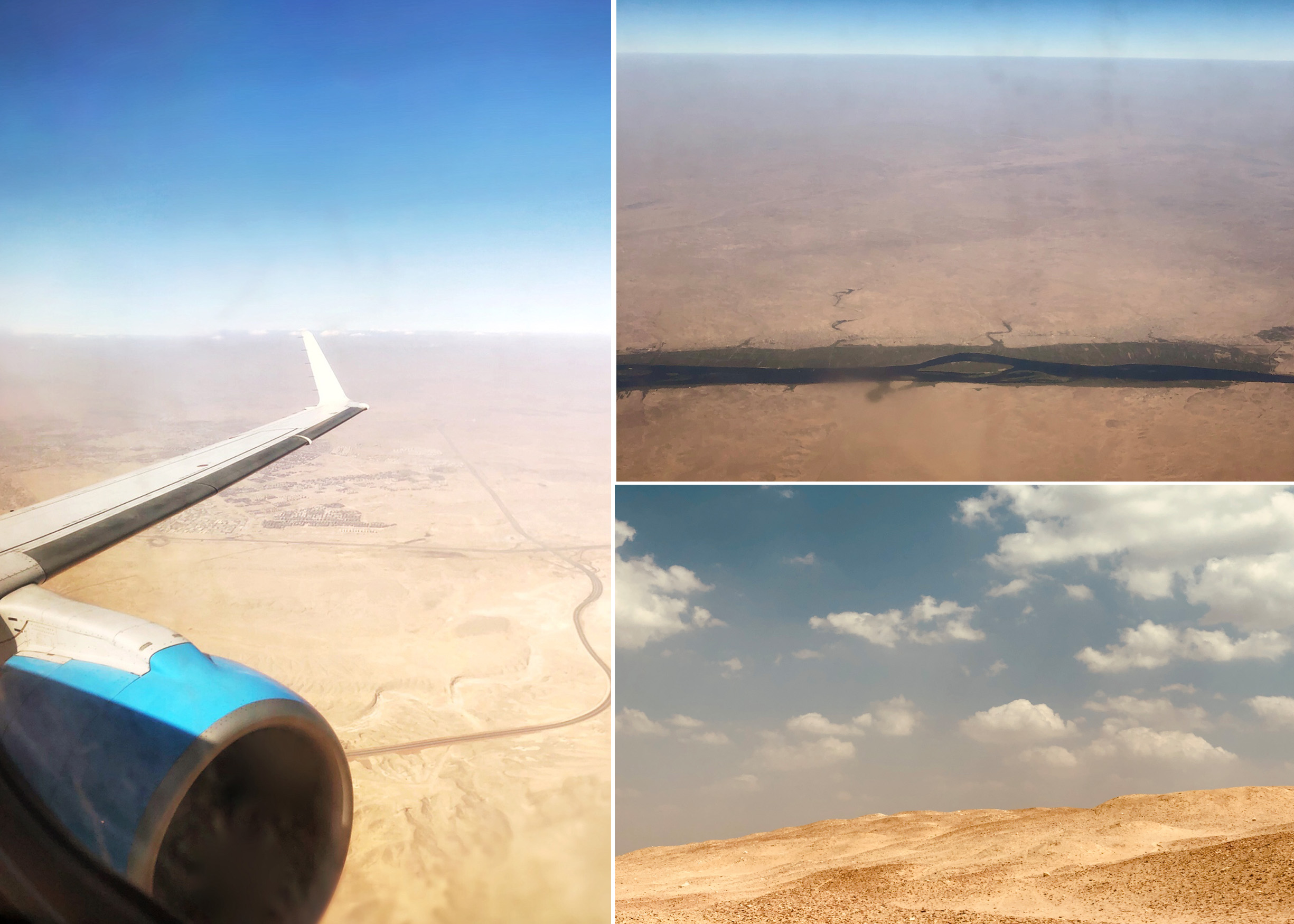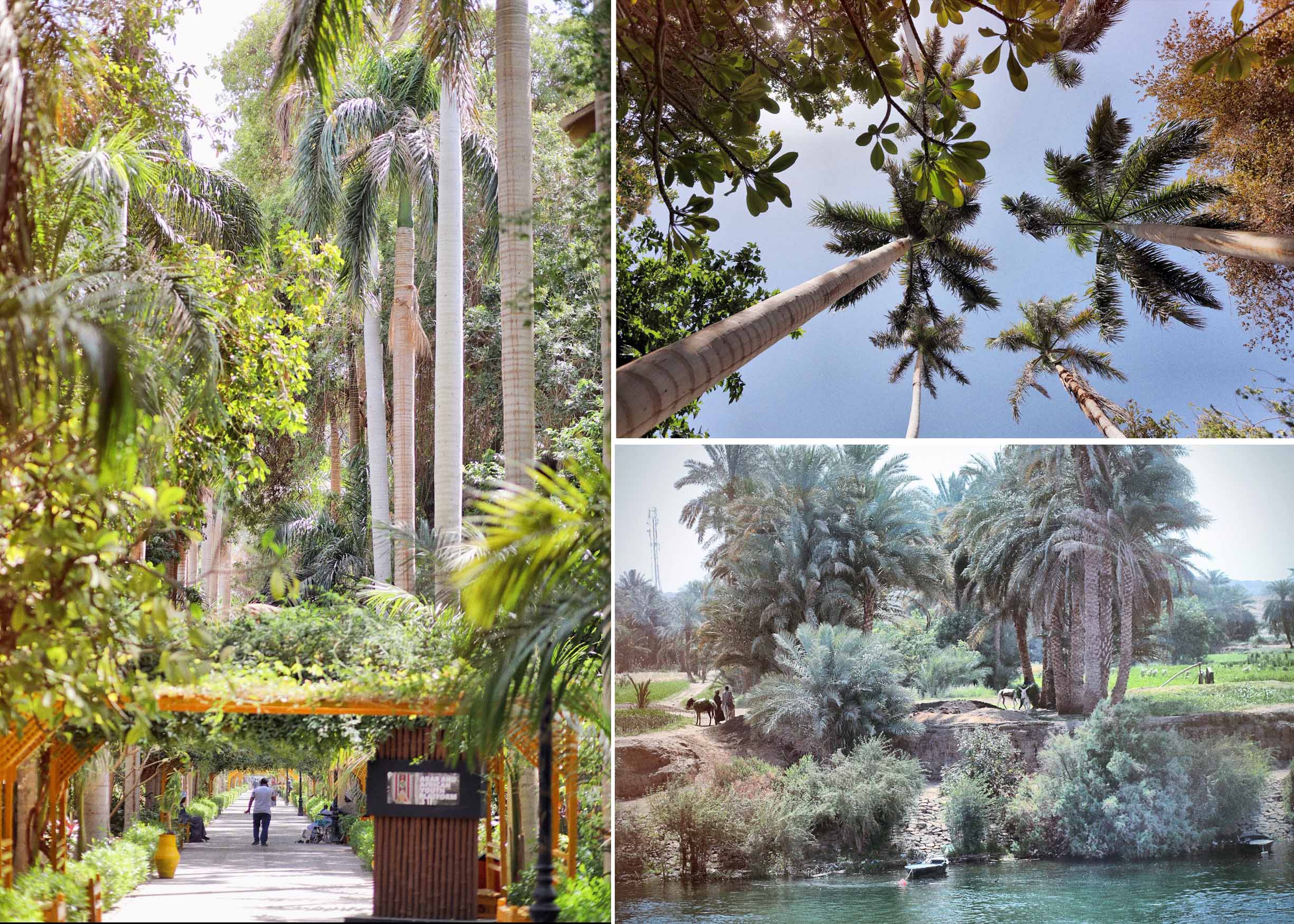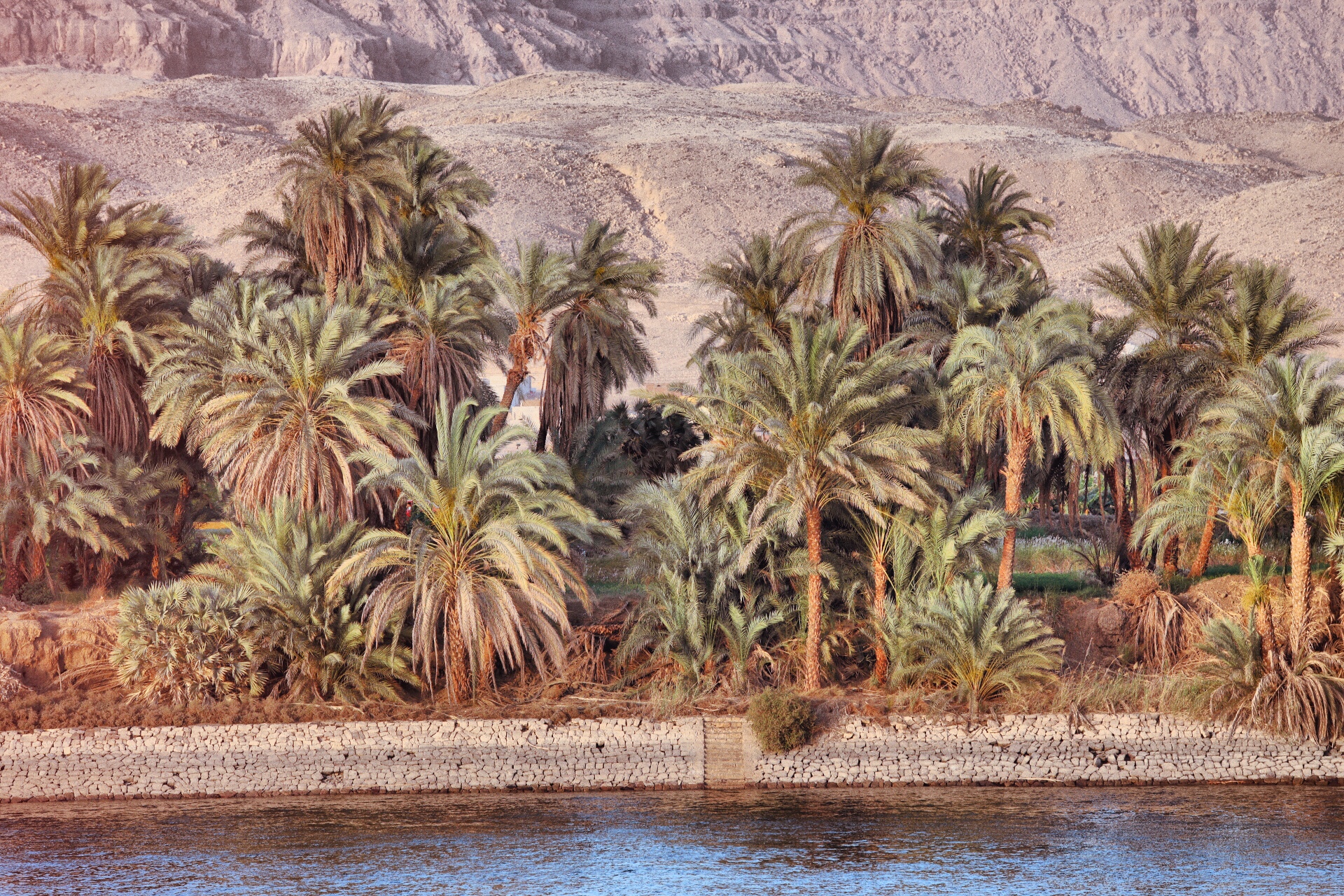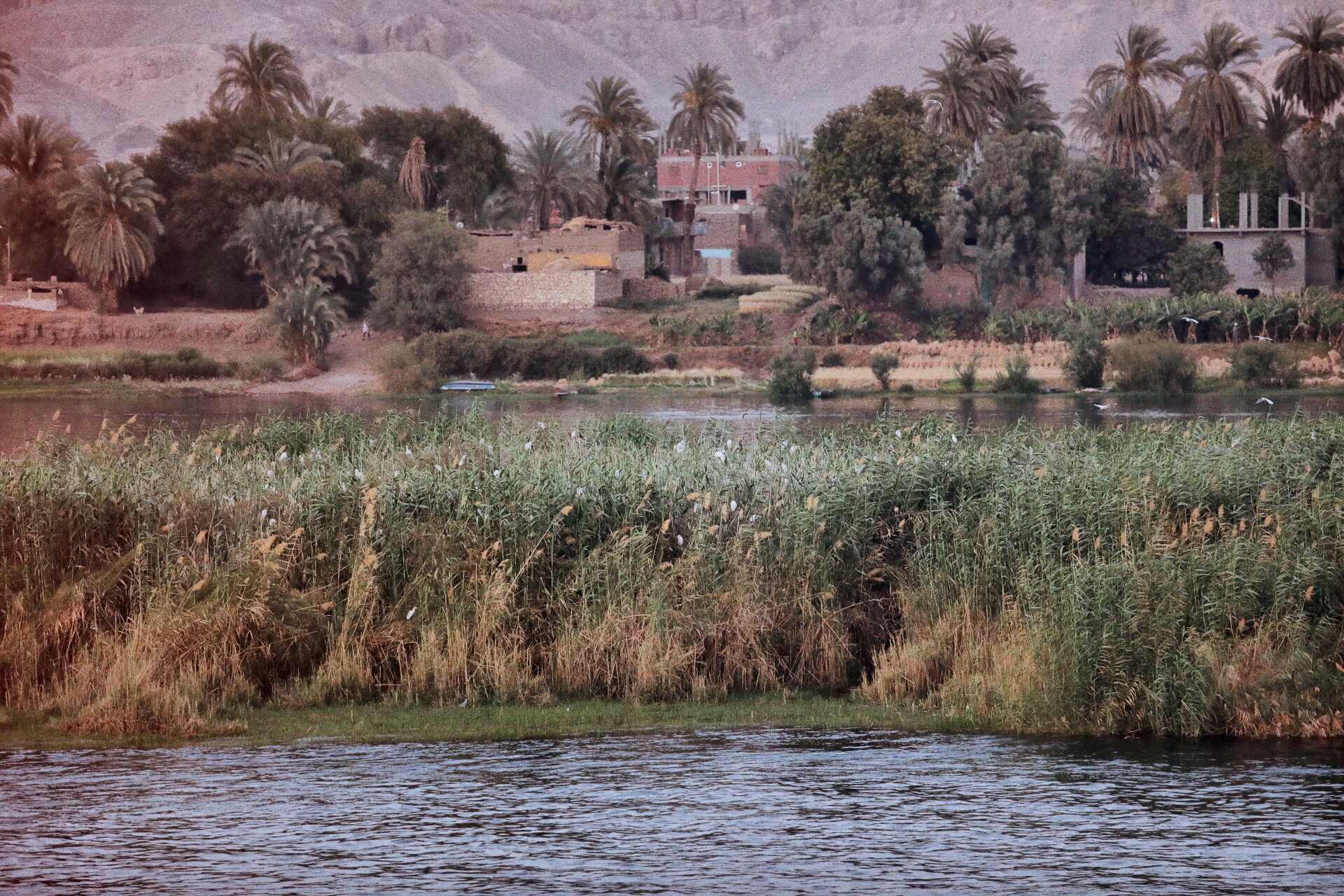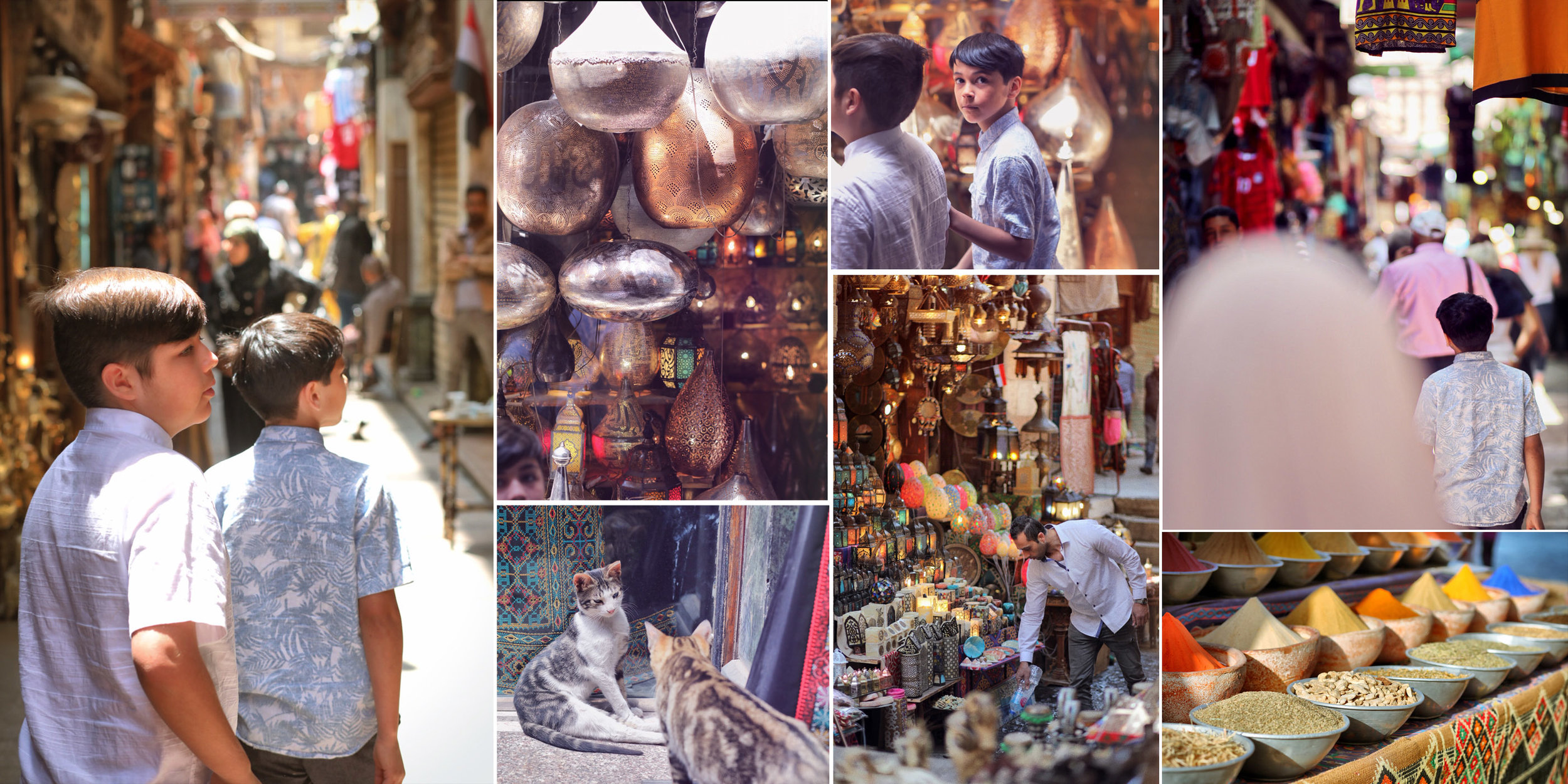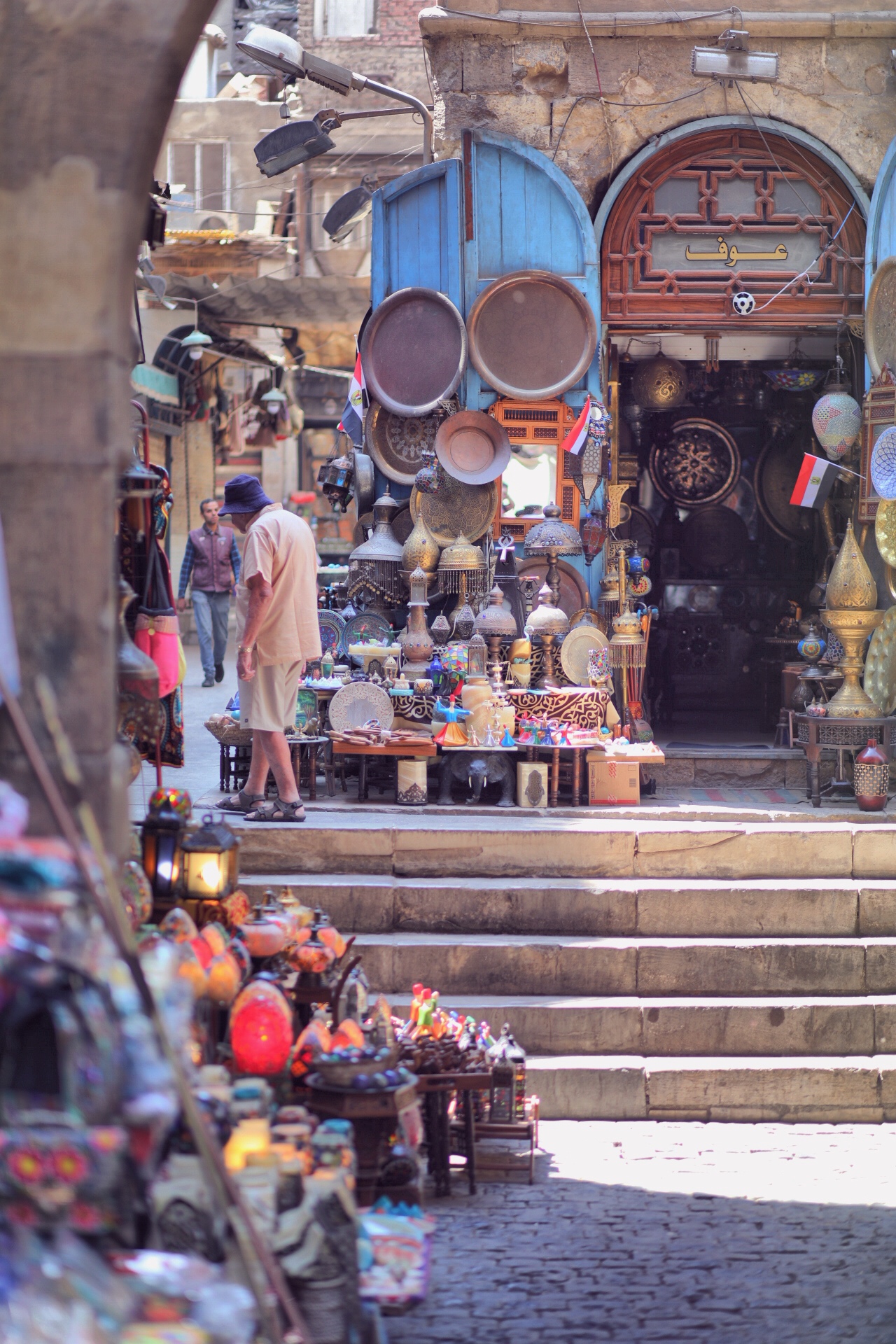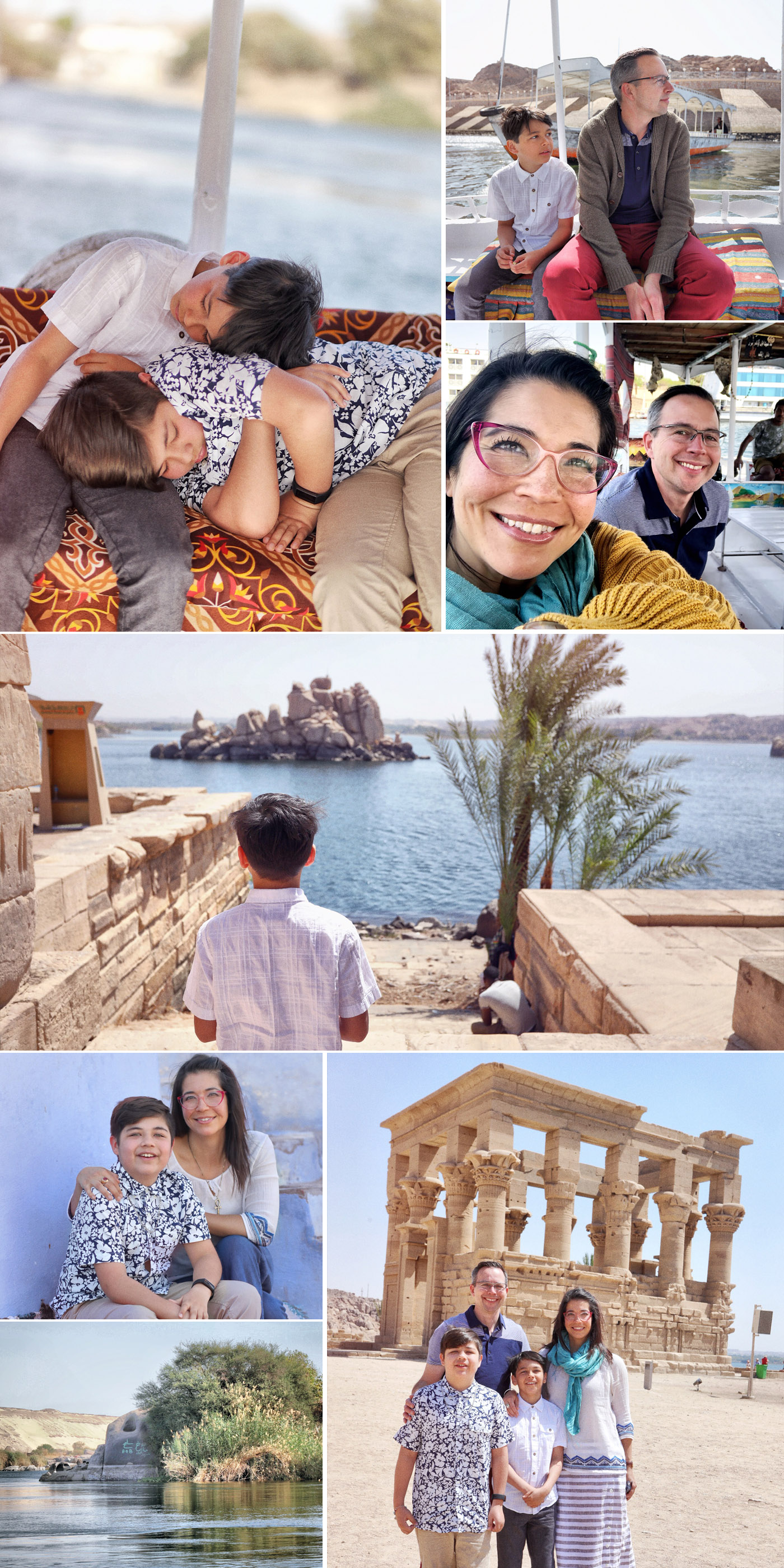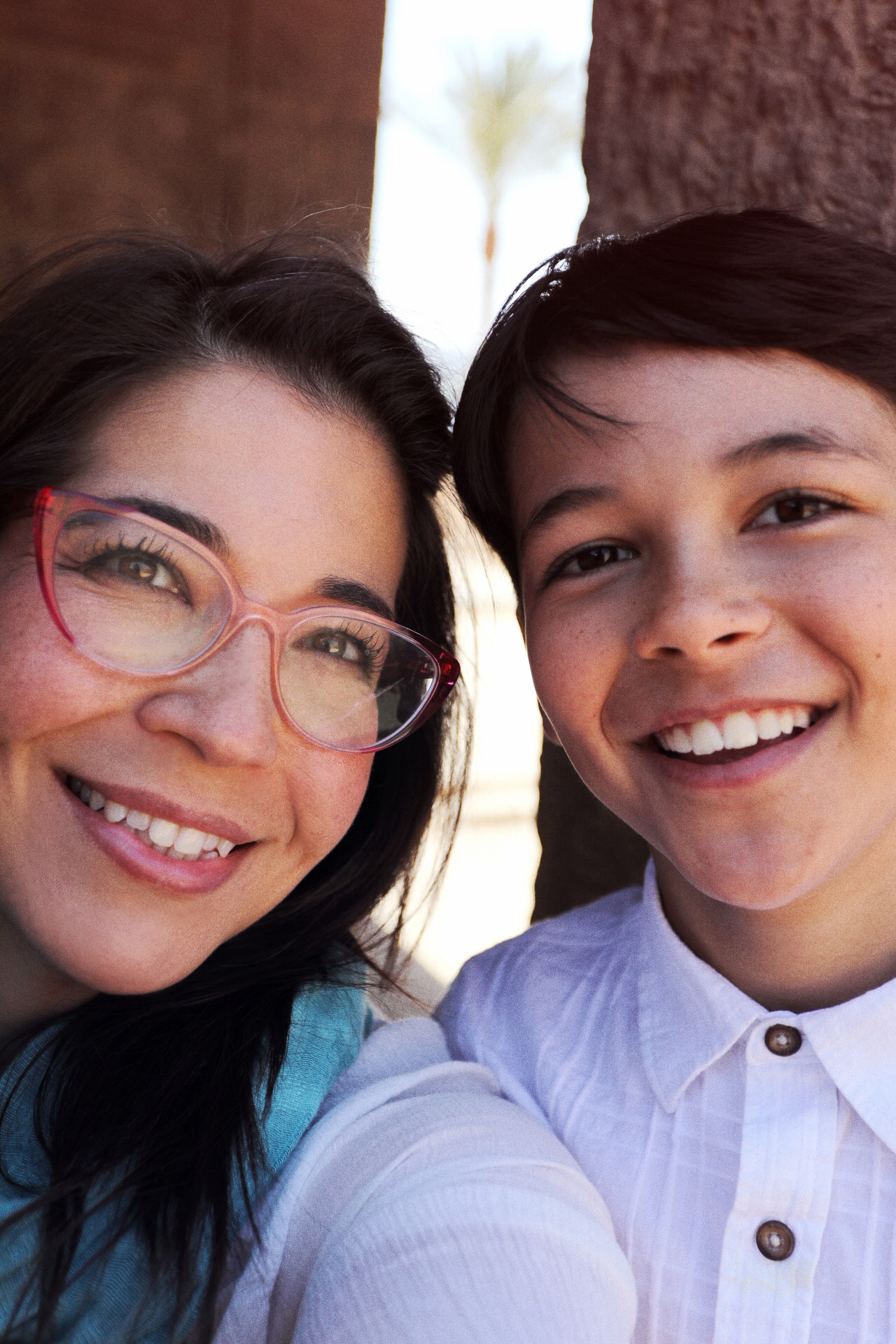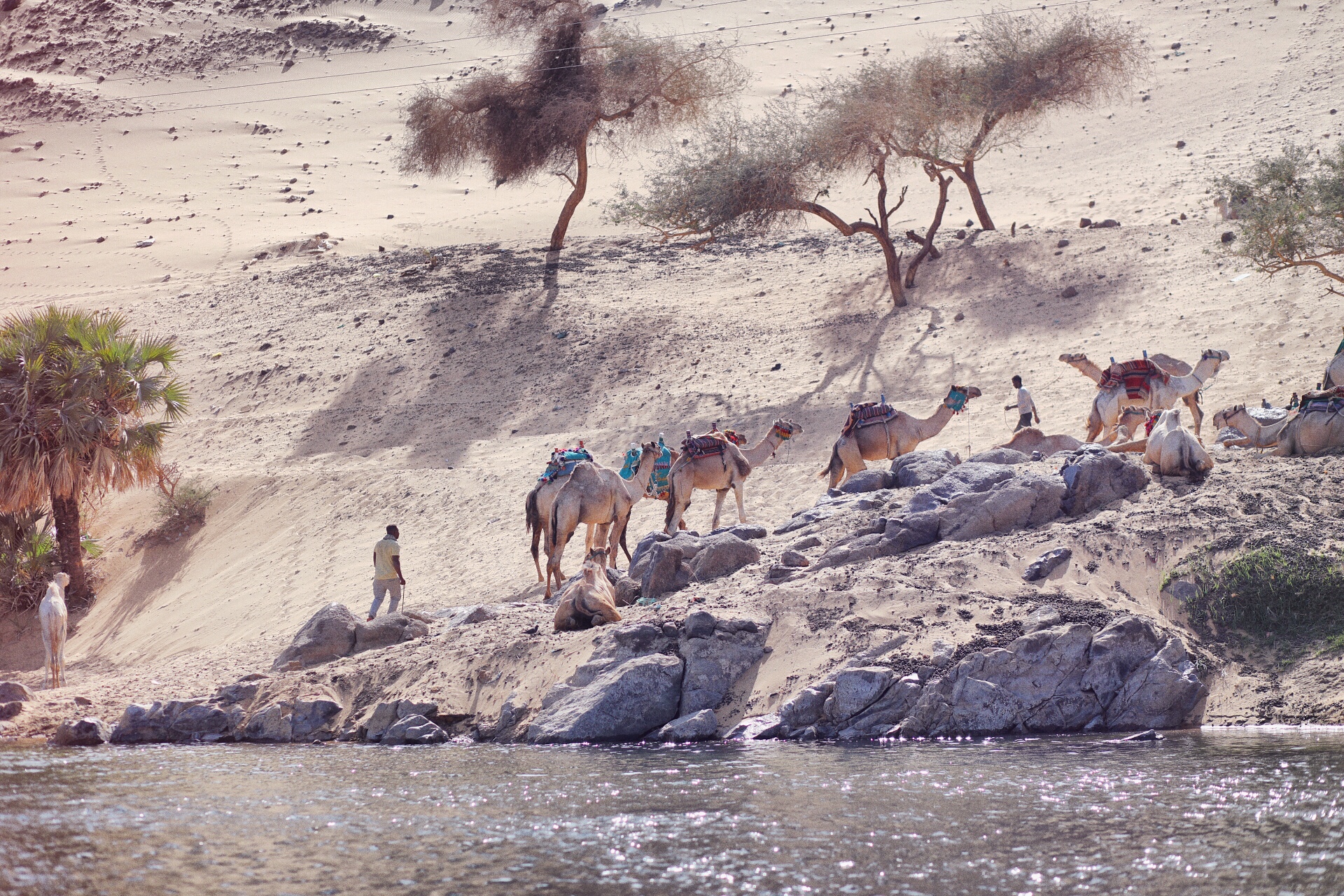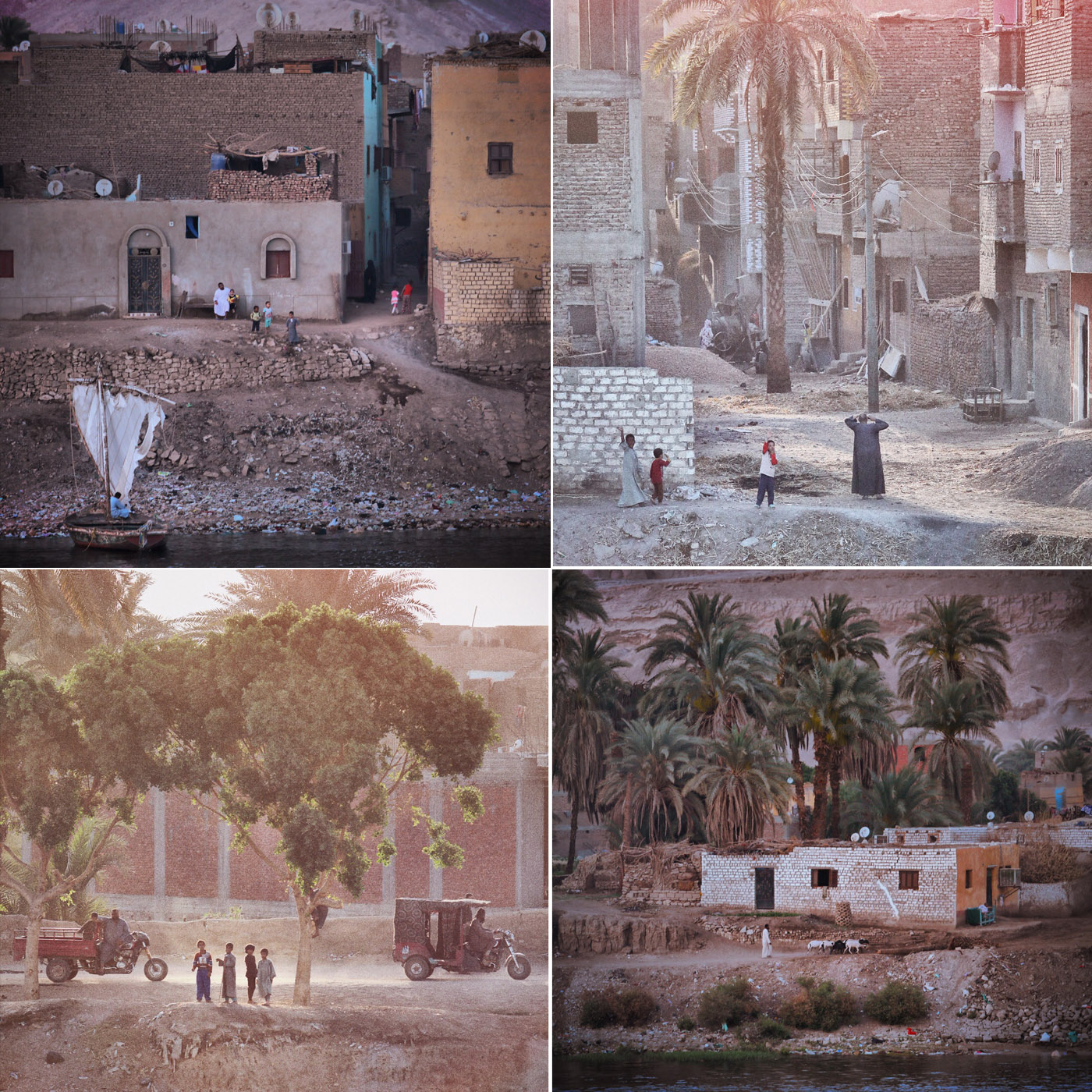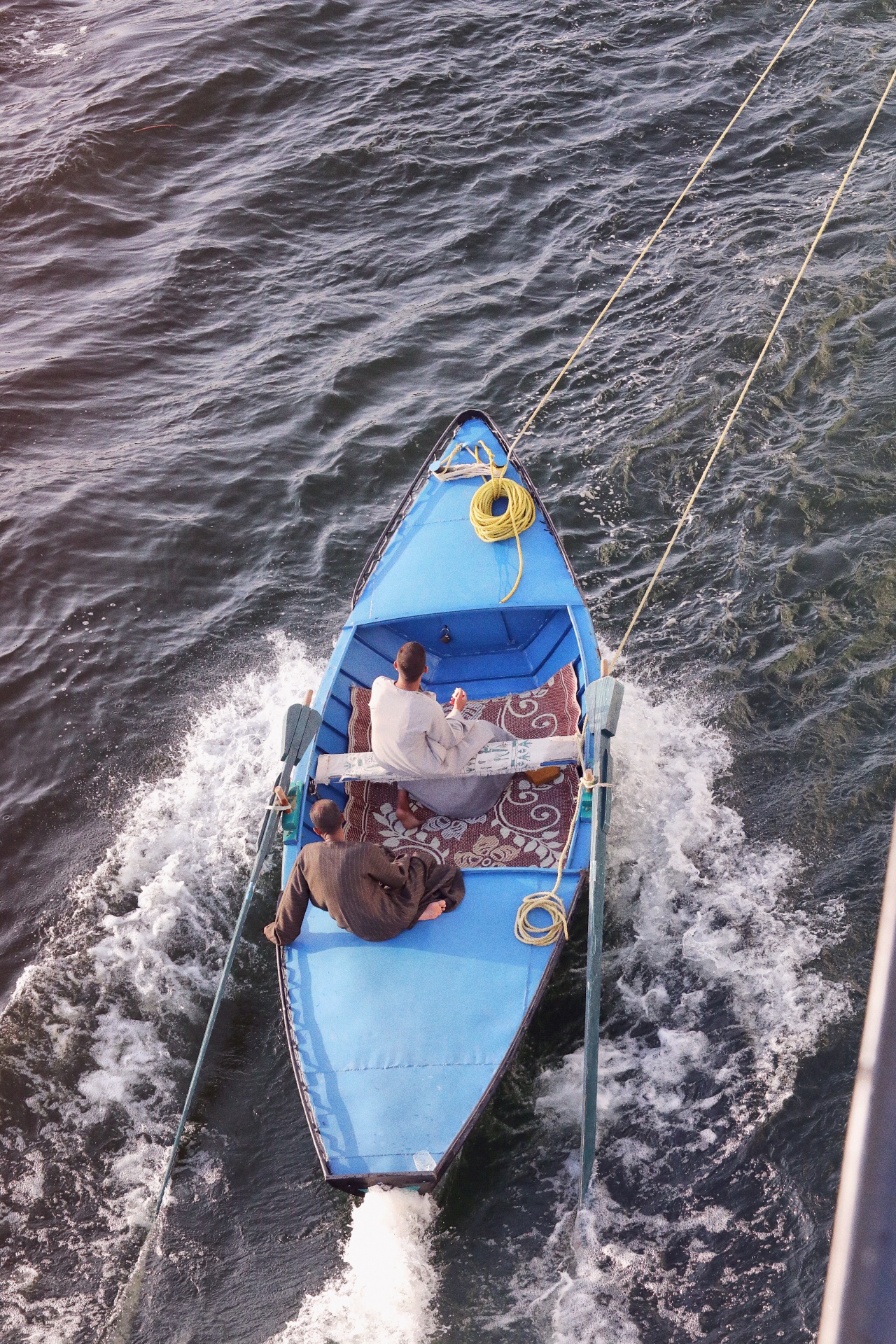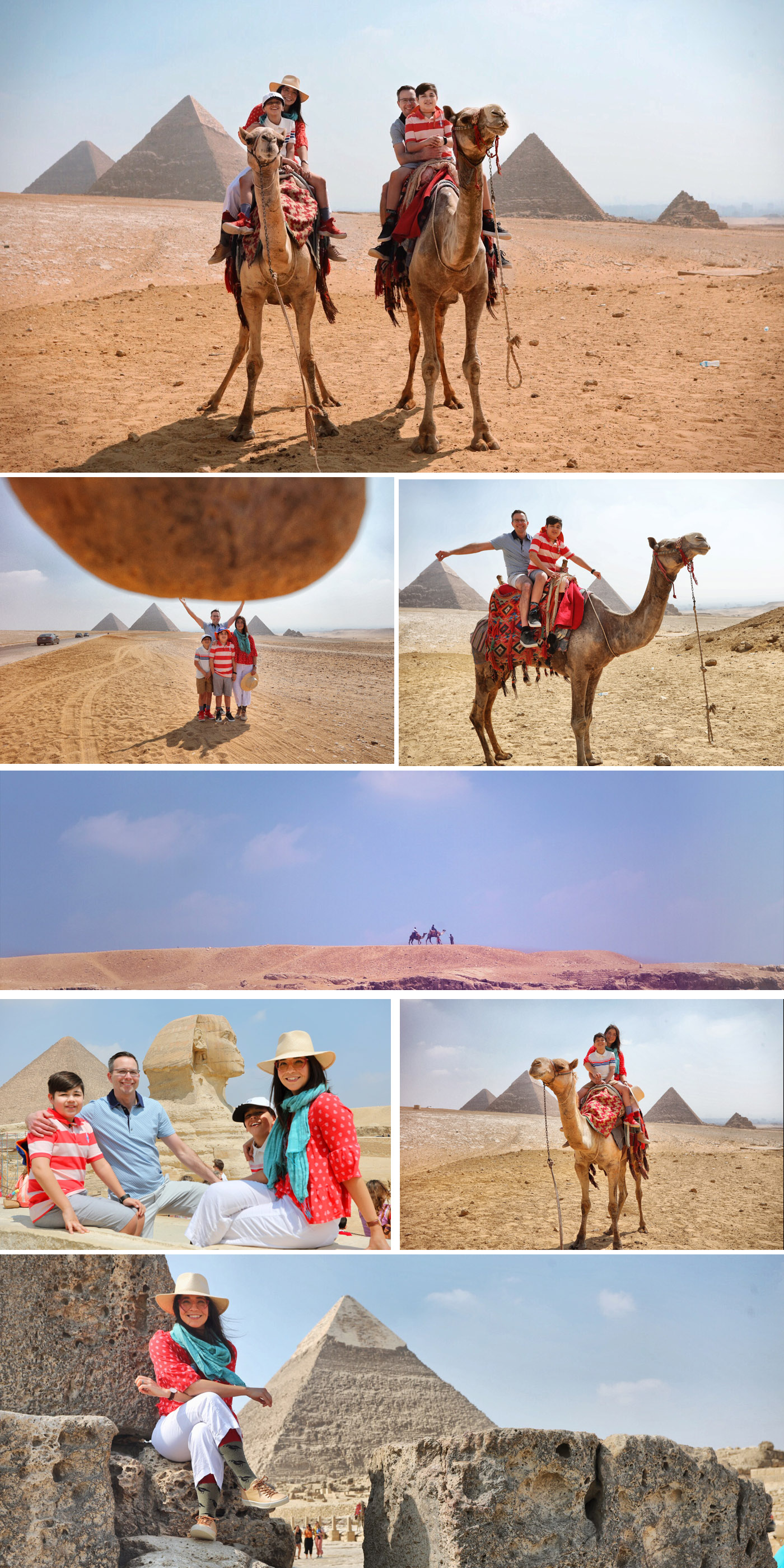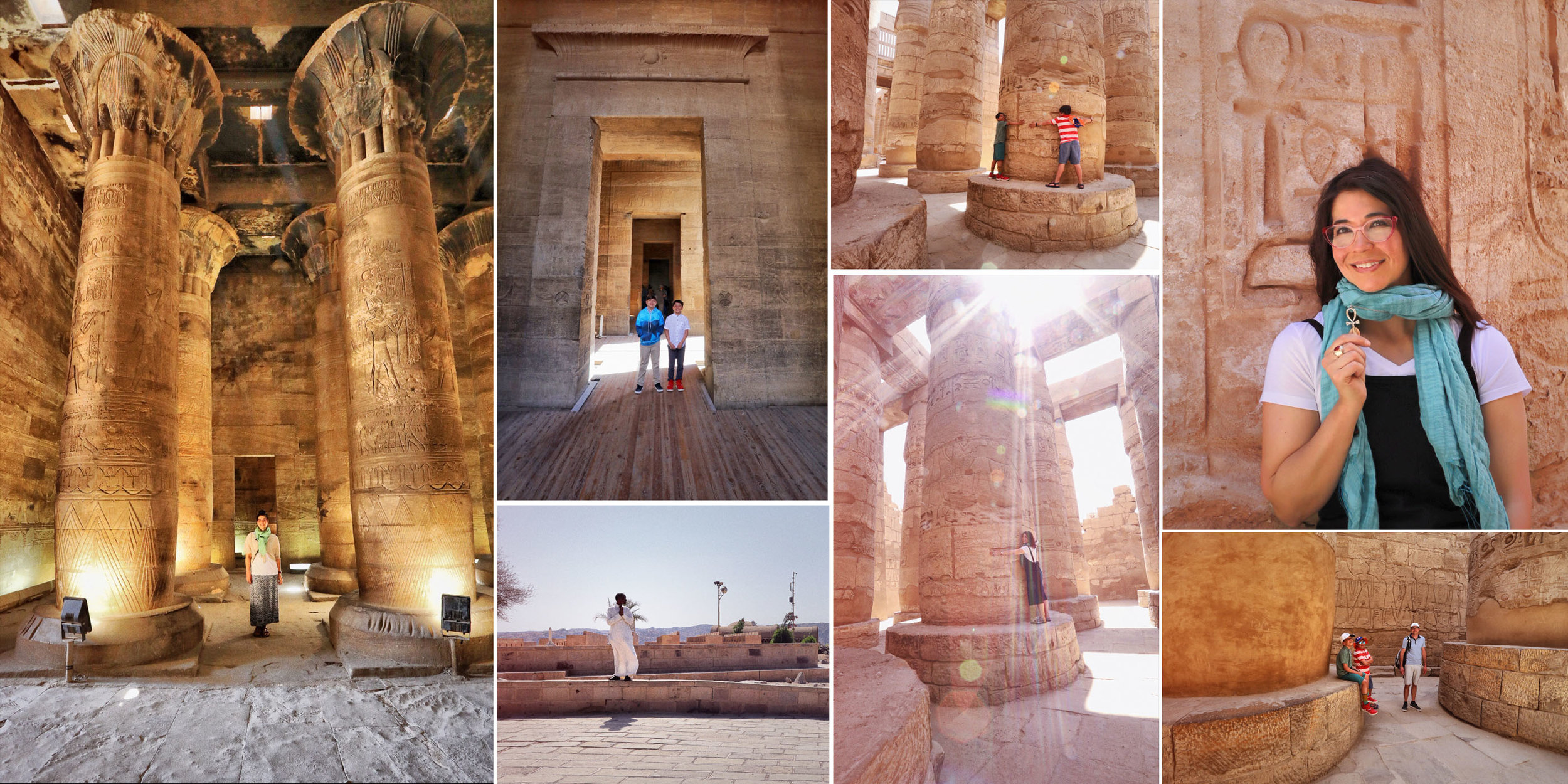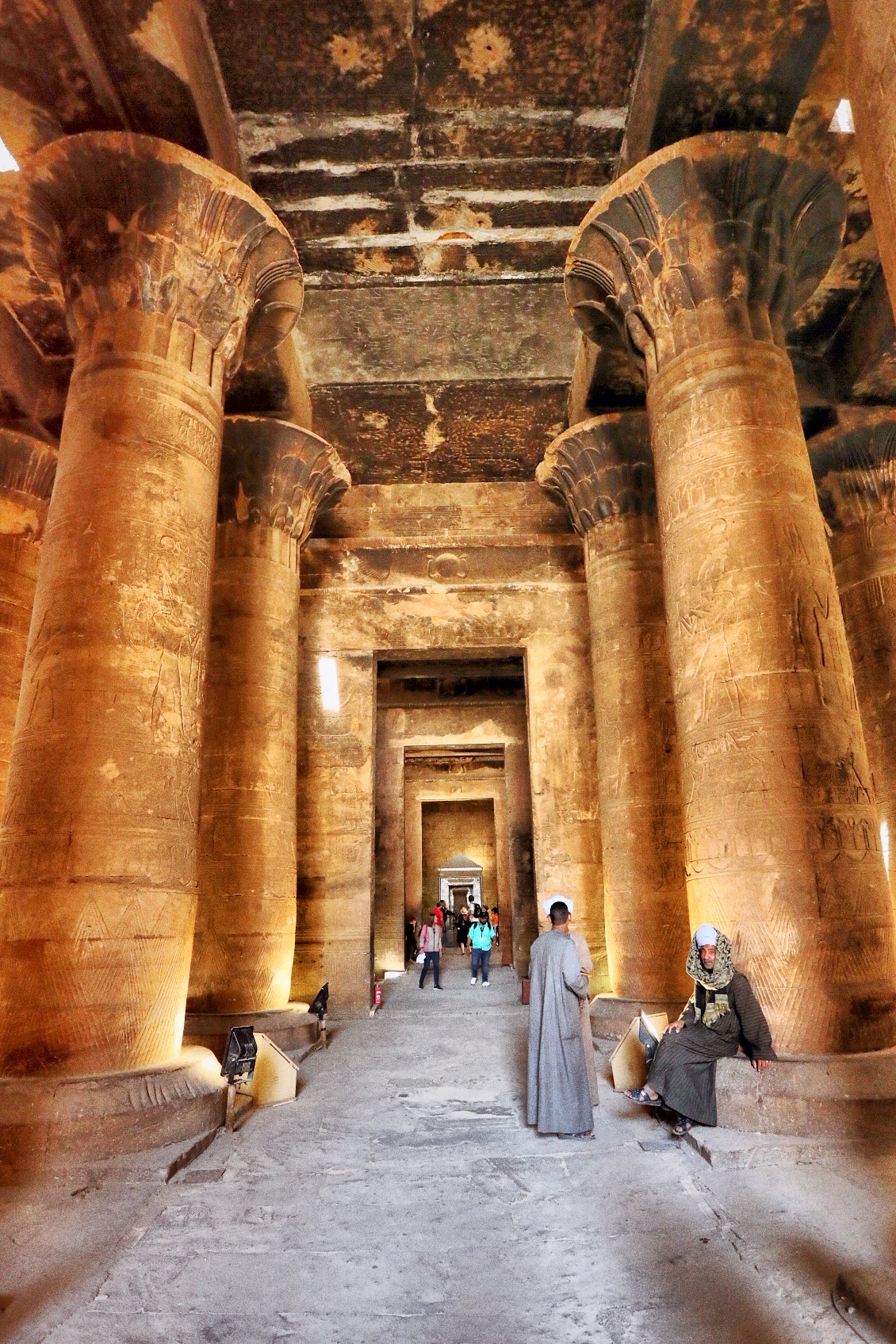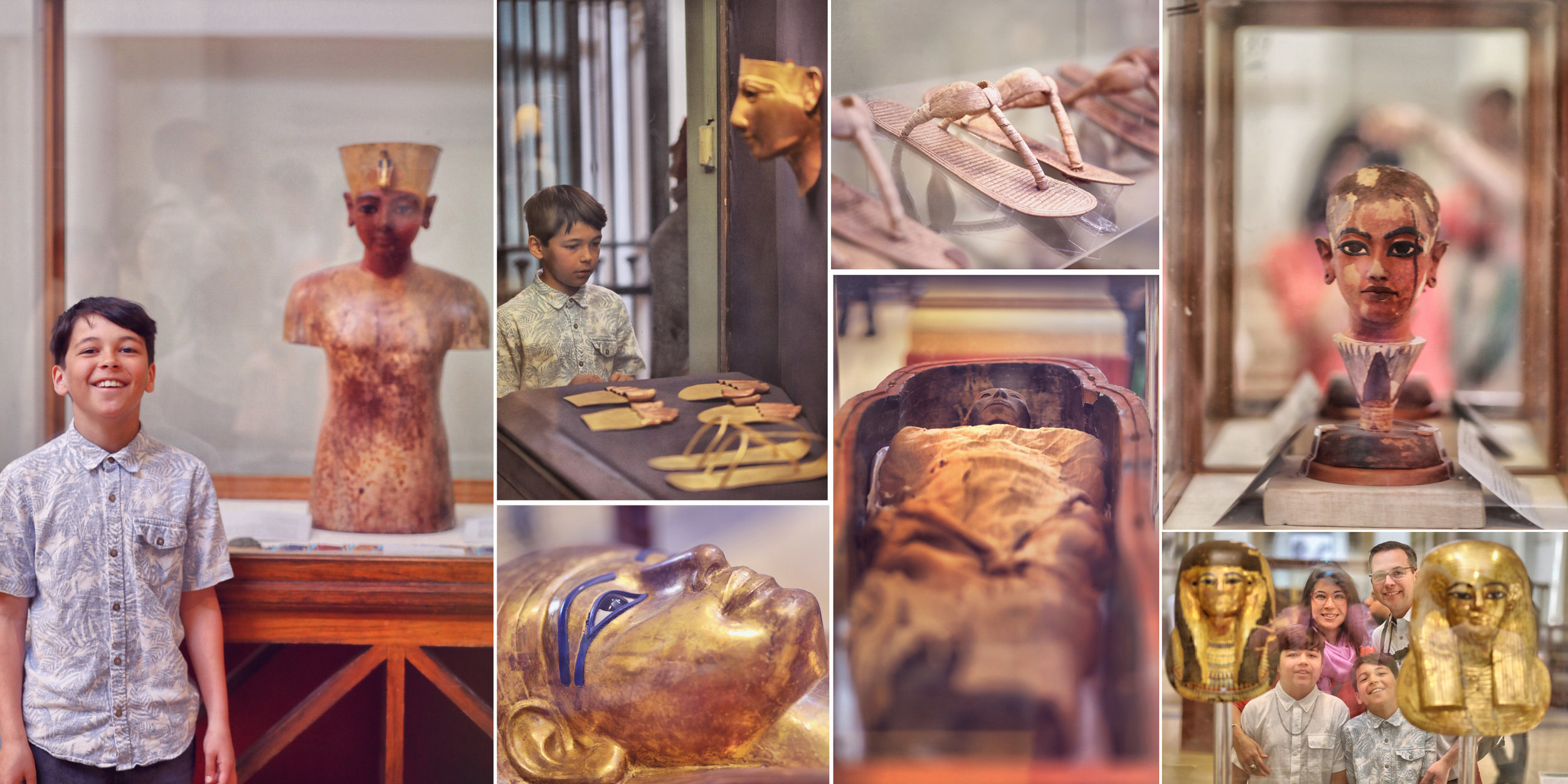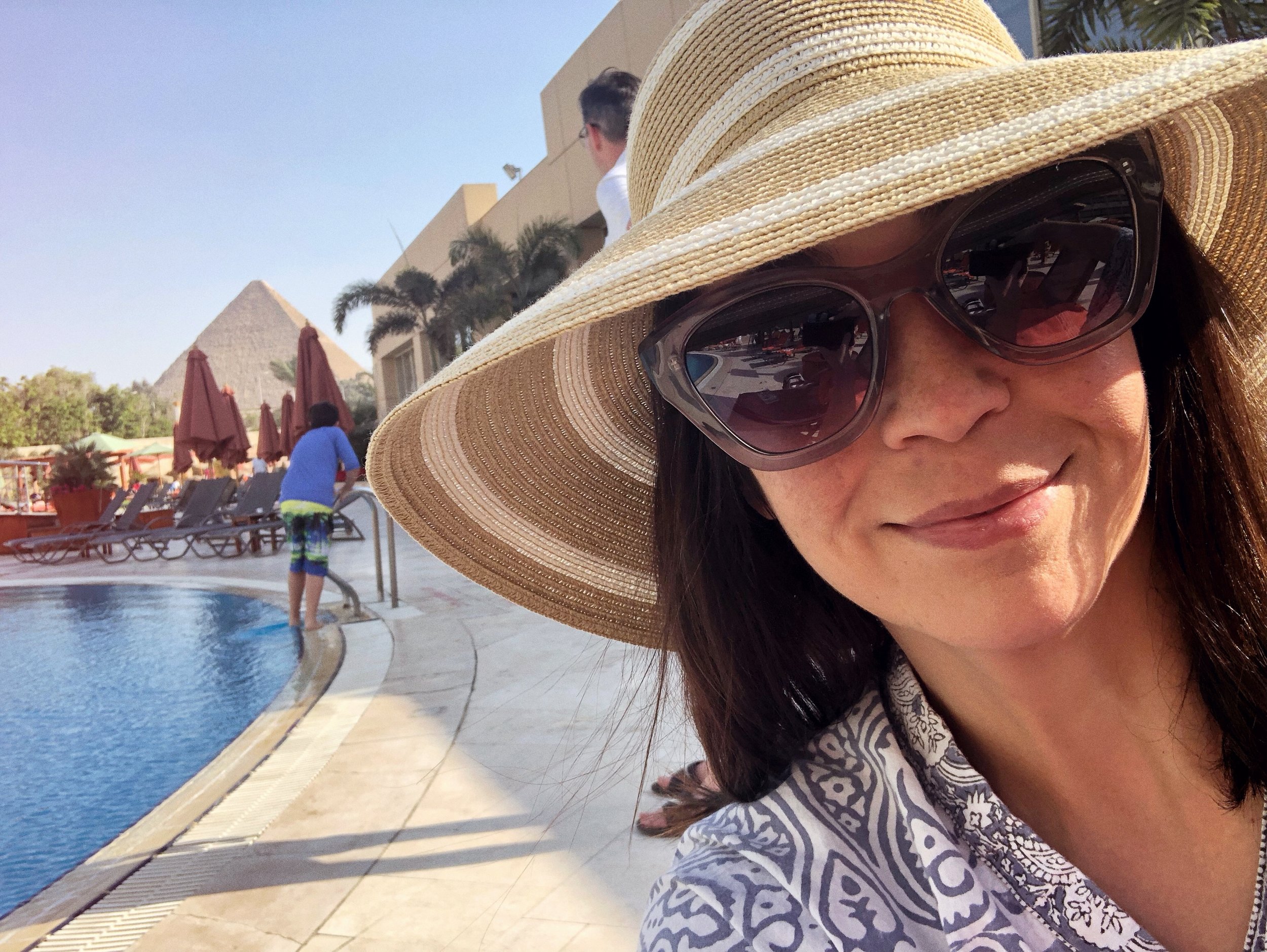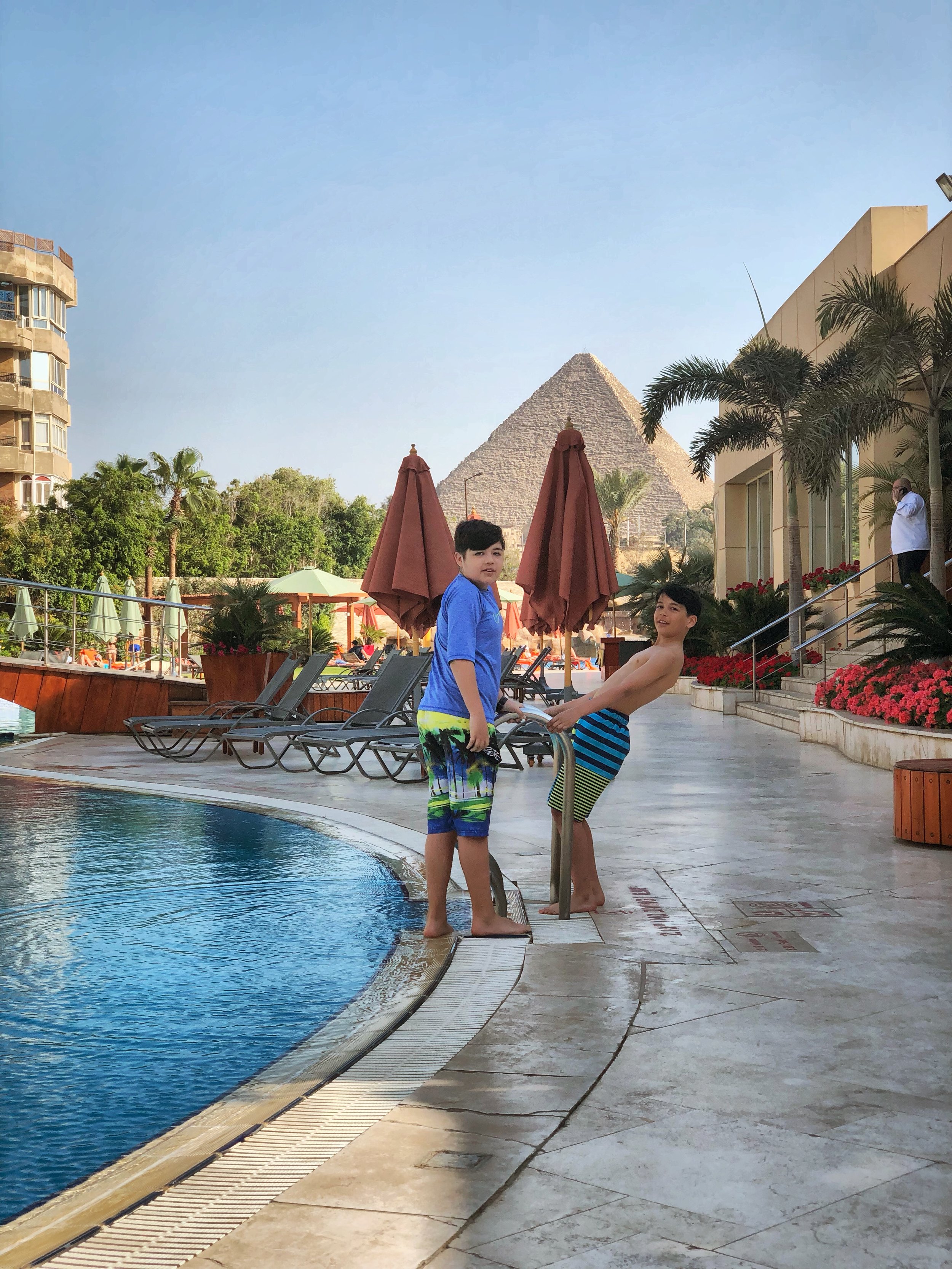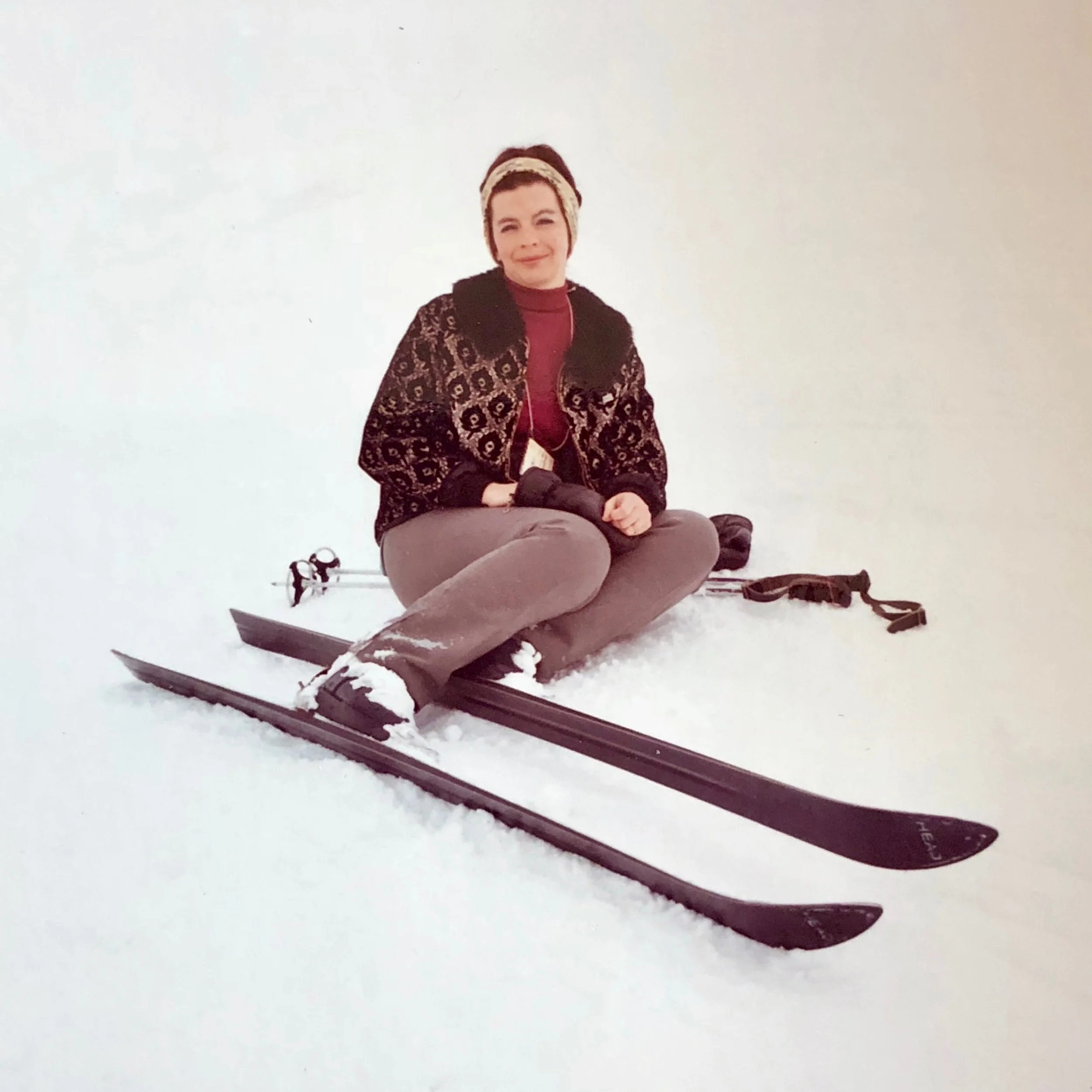Egypt

I am no sun-worshipper on vacation, but it was my last day in the land of the sun god, Ra, and so I flagged down the waiter in a pink polo shirt and ordered a virgin Bloody Mary by the pool. It was well salted and peppered and suitably lemony. I wanted to savor it but the paper straw balked about halfway through and I was forced to gulp the second half down.
I set my glass aside and stared up at the Great Pyramid of Khufu, which loomed over us. I felt some thoughts starting to crystalize out of the mists that had been swirling in my head the past week, and I put down my book at this point as well, because I suddenly needed to concentrate. Something was coming.
The Lucky Nut
I’ve long since stopped seeing our travels as mere vacations. My experience has been, to the extent that I now expect and look forward in eager anticipation to the fact, that in every travel adventure, there seems to be what I call a “lucky nut" for me to stumble upon - some big discovery or moment of clarity, some meaty realization for me to contemplate, and that I can take wisdom or healing from, and which aligns me better on my path going forward. If I look back at my recent trips, they reveal themselves in retrospect to have been touchstones in my life, helping me to course-correct in important ways. There was my life before Iceland and after Iceland; before Spain and after Spain; before Austria and after Austria. That kind of thing.
Why should this be? Vacation brings temporary reprieve from all normal outside stimuli, from responsibility and obligation, so that other, deeper truths can come through. Vacation grants permission to stare blankly into the ether, motionless, for long stretches of time, if you so wish. For example, have you ever tried to find the “back” of a bottomlessly blue sky? It’s mind-bending and liable to fill your head with all kinds of things you never thought of before. Vacation also lets you make relationships the central part of every moment, instead of work or chores, and so you get clear about different aspects of those as well.
“The only trick to lucky nut finding is that you mustn’t go looking for it, because then it will elude you.”
Perhaps, if you are into more gritty kinds of travel and adventure, as we are, it is also the unexpected juxtapositions one encounters, the new sights, sounds, tastes, and yes, smells, that jolt our awareness into another dimension; the lurch of our emotions and point of view when confronted with uneasy realities. Street cats, dogs and children come vividly to mind here. Whatever it is, when I travel, the plug is pulled on my everyday mind, which empties like dirty dishwater. New experience flows in. And somewhere in the process I get flashes of insight and clarity on all manner of things that worry, plague and overwhelm me. That is what I call the lucky nut.
The only trick to lucky nut finding is that you mustn’t go looking for it, because then it will elude you. You must wait and let it come to you. Sitting poolside on the Giza Plateau, this was what I felt coming, and what I had had to put my book down for.
This April (2019) we went on the family trip of a lifetime, and for an archaeologist like me, a real bucket list item: Egypt. Cairo, Giza, Aswan, a three-day boat trip up the Nile, and Luxor - we did it all and back again.
Trust Life
When we initially arrived at our hotel in Giza at 3:00am, after 22 hours of travel, we discovered that the connected rooms we had reserved to keep the kids close and safe were unavailable and we would be separated by the length of a hotel corridor. Brent and I would have to split up to each stay with one child. Once settled, we also discovered that the electric adapters we had brought did not fit in the wall sockets, leaving us without phone or communication, including with the tour company who would be driving us around, nor even an alarm to wake up in time, about 4 hours hence. Most worryingly of all for me, as a professional photographer, I had no way to charge my camera for more than a day’s worth of pictures. Imagine being in Egypt for 11 days and not taking pictures for 10 of them!
What normally would have sent me into an exhausted fit of panic and outrage…didn’t. I felt slightly removed from the whole thing and just heard the words “trust life” in my head. Somehow, I knew that while these were small setbacks, everything would come out alright and probably sooner than I thought. So I let it go.
The kids, however, started to spiral down and out of control. While they love to travel, they are, at 12 and 9, relatively new to the game and in many ways are still doing the equivalent of “googling their symptoms” whenever they start to feel sick. Every setback makes them think they are definitely going to die. I heard myself telling them, though, with complete calmness and a deep inner knowing, that everything was fine and they just needed to “trust life.”
Trusting life is the practical thing to do when you are traveling; for one thing, you are without many of your usual resources, and so what other choice is there really but to take things as they come? But on this, our first night in Egypt, the admonition to “trust life” felt like something more than just a practical travel tip. For a start, I can locate the position of my normal, conscious thought stream to a thick band above the eyes, like a bandana around my forehead. These thoughts usually come in picture form; I “see” them. But my inner voice is purely auditory, and originates from behind my right ear. So when I “hear” a thought rather than “see” it, and it comes from the back of my head rather than the front, I know there’s something else going on and it’s time for me to listen up. I could feel that this simple-sounding mantra to “trust life,” was meant to represent, or open a door to, something much bigger and deeper than functional wall chargers and a connected suite. I made mental note of it and went to bed.
As our trip progressed, I found more and more occasion to reflect on the importance of trusting life and what that means. Let’s just talk about Egyptian traffic for a minute, shall we? Getting behind the wheel on the streets of Cairo requires a level of trust that I may never reach. There are often no lanes marked on Egyptian streets, nor any stoplights, stop signs or speed limits. There is also no law about what kind of “vehicles” are allowed on the road, or if there is, it is not enforced.
Congestion, bottle neck, traffic jam, gridlock - traditional words and phrases we associate with “traffic” simply don’t do the situation in Egypt justice. Cars and commercial trucks barrel down the roadway laced with jitney buses, vans, tuktuks, motorcycles (often carrying four or more people, including infants), horses, mules, camels, carts carrying vast mounds of garlic or heaps of tomatoes, and contraptions that must surely have been built by the drivers themselves out of scraps found in alleyways and garbage heaps that clog the canals. I was deeply disappointed, for example, to have missed a picture of an orange seller’s cart, which was a bicycle modified to have a gas motor, and a teetering, steam-punk looking cart twice as tall as it was wide off the back. It consisted of four posts, a metal roof, and a platform beneath for an upholstered dining room chair (presumably for the man to sell oranges from when he came to a stop). A bevy of nylon net bags carrying bunches of oranges, hung from nails and hooks up and down all four posts and across the metal roof, swinging wildly to and fro with every bump in the street and threatening to upset the cart at any moment. Or maybe it only appeared that way.
Dogs and pedestrians, including unaccompanied small children, reel and pitch into the streets from both sides and all angles in Egypt, seemingly unafraid of not making it across the street alive. When our vehicle stopped, it was frequently swarmed by small children making half-hearted attempts to “clean the car” with a dirty rag that they wiped over the doors, holding their hands out for Egyptian pounds. Neighboring cars streaked by leaving only inches between themselves and these soft bodies.
And yet, we never saw a single accident, or even a close call (by Egyptian standards) while we were there. There was no incident of road rage. Gradually, although how it really all works continued to elude us, we did have to concede that there was a kind of pattern to the chaos. And come to think of it, doesn’t that mean, by definition, that it wasn’t technically chaos? It only appeared to be chaos because we had not the eyes (or the skill) to see and navigate it in its proper context. When it comes to driving in Egypt, we decided the drivers are either complete maniacs or Ascended Masters. We arrived thinking the former and left thinking something closer to the latter.
“When it comes to driving in Egypt, we decided the drivers are either complete maniacs or Ascended Masters. We arrived thinking the former and left thinking something closer to the latter.”
I was surrounded in all directions by examples of people “trusting life,” or more colloquially, “going with the flow,” as a matter of course. Indeed, I came to see the streets of Cairo as a kind of land-based counterpoint to the great River Nile itself, flowing always onward, with people dipping in and out of the current at will, allowing themselves to be carried along, but still always getting where they wanted to go. What an enviable combination of intention and surrender, I thought. Imagine what would be possible in life if I could balance my focused intention with complete surrender.
While Egypt offers a diverse menu of opportunities to trust life in direct, physical ways, I began to extrapolate that in my mind to something much broader and more metaphorical. Trusting life in this sense meant to me not needing to have all the answers, all the solutions - even to immediate or acute setbacks - to have a peaceful, contented life. Like slipping into one of the loose-fitting garments that many Egyptians wear, one that is actually separate from you (and allows you to feel it as separate), I found myself not only experiencing life, but also observing it, in real time. In doing so, by being observer as well as participant, I stopped confusing my circumstances, my thoughts, my emotions, my fears, with…myself.
Now, I am an anthropologist and an archaeologist and Anthropology is all about stepping outside of a situation to observe it from “afar” even as you are experiencing directly. That said, it’s easier to do on someone else’s life than on your own. But there is great freedom in it if you can do it, and I found this state of being coming to me naturally and with ease in Egypt. I walked around, feeling like I was “wearing life” loosely, and suddenly it didn’t matter what happened or didn’t happen because I experienced it all as going smoothly regardless. There was a distinct sense of “gliding” through the days that I hoped I would be able to keep going once we were back home.
The Ankh
The Egyptian hieroglyph for Life is the fabled symbol of the ankh. I remember Mom wearing her gold-foil plated ankh necklace throughout most of the 1970s and into the 1980s, although she never really put it away for long. It was her signature piece. I have Mom to thank, in large part, by the way, for becoming an archaeologist. She had wanted to be one herself, but she entered college at NYU in the late 1950s and archaeology just wasn’t considered a suitable, or viable, career for a woman at that time. What is more, she had wanted to combine an archaeology major with a geology minor and was scoffed at - what did geology have to do with archaeology? Her geology professor, she always told me, was also considered by most at the time to be a part of “the lunatic fringe.” He taught a theory he had about something called “plate tectonics.” Preposterous, they all chorused. Continents don’t move!! But indeed they do.
Everything moves. Nothing stays the same.
Mom was a little ahead of her times in this, as in many ways, but rather than push on, she tucked her dreams of becoming an archaeologist away and decided to just study Classics. Afterwards she became a librarian for awhile, and then somehow ended up at Kodak as a computer systems analyst - one of the first women coders. It was another trailblazing field for a woman, but not one that brought her a lot of joy. Satisfaction at challenges met, perhaps, but joy? No.
And so Mom had a gold ankh necklace that she wore everywhere. And our house was filled to the rafters with books about the ancient world, lost civilizations, and ancient human ancestors -maps, atlases, dictionaries, text books, obscure publications, historical novels, coffee table books. She flipped through the pictures with me and talked to me about the wonders of the ancient world, famous sites, current theories. Her excitement and interest ignited my own. By Second Grade, I knew the Australopithecines (our earliest human ancestors) as well as I did T. rex and Brachiosaurus.
When I grew up, I became the archaeologist. And when we knew that we were going to Egypt, I knew how to pack only two things for sure: Dad’s college ring, which has seen the world through WWII and later travel; and Mom’s ankh, symbol of Life. I slipped the ring on my finger and the ankh around my neck and didn’t take them off for the next 12 days.
Visiting the pyramids, exploring the Giza plateau, tiptoeing inside the tombs, and touring the Egyptian museum, I thought not just about life but Life. One has only to see the teeming streets of Cairo and Giza, the street children hustling, the feral cats and kittens galore, the dogs by the score; or a passel of plump, sleepy little pups discovered in the shadow of the citadel (which Seu dearly wanted to rescue and take home), to know that while individuals come and go, Life itself blooms eternal.
In the midst of these musings, I also gained a more nuanced understanding of the ankh, which symbolizes a little bit more than just “life.” It is actually the symbol of continuing life, eternal life; it is also the symbol of family (mother at the top, father at the bottom, children to either side), and Egypt itself (Lower Egypt at the top, Upper Egypt at the bottom, and the Nile crossing and uniting the middle). The absence of any one element disrupts the whole, and no one component is more important than the others, but together, they carry on forever. Mom and Dad may be gone, but “the family” is still in tact because I’m still here. “The family” continues because my boys are now here.
The pyramids, too, giant edifices that plant themselves firmly in your psyche, never far from conscious thought, are all about rebirth and resurrection, continuing life. Then I looked up the second night of our arrival and saw that it happened to be a full moon - end of one cycle, beginning of the new - and the following day was Easter. So the early part of our trip was awash in symbolism that got me thinking about not only life but resurrection - not resurrection of the body, as the ancient Egyptians were trying to effect, but reanimation, say, of a tired spirit. A return to a commitment to, and trust in, Life. I began to think about new days and good mornings and couldn’t these be possible for me again? Isn’t it time?
The truth is, although I am quite self-actualized and come across as goal-oriented, accomplished, and very capable, I have been disoriented and adrift, sometimes less, sometimes more, for three years now (since Dad’s passing), and in some ways it’s felt more acute than ever in the last 6-8 months. In Egypt, though, I began to feel plugged in again - into the Great Life Current. I began to feel a part of something vast. After so many years of isolation and feelings of disconnection, I let myself sink luxuriously into the feeling. Maybe the admonition to “trust life” on that first night of our arrival was really trying to tell me to “plug back in, reconnect, and trust that Life has everything you need.”
The Great River
From the air, it is apparent just to what extent the Nile River is the giver of all life in Egypt. It wends through the vast desert like a ribbon unfurling. Close to its banks is a sharply defined green zone - fields, canals, banana trees, date palms. Outside this area…nothing. No hint of life or reprieve. Only sand and stone and unforgiving skies.
Over 90% of Egyptians, in a country of 100 million, live within three kilometers of the Nile - that’s just 6% of the entire landmass of the country. And so even when we were not in actual view of the water - wandering the Cairo bazaars for example - there was still always the underlying sense, or at least knowledge, that it was all just an extension of the Great River Nile.
It wasn’t long before the Nile seemed like a real-world manifestation of the Great River of Life itself. This was an easy jump to make as everything in Egypt seems to be on the move - flowing, streaming, sometimes whirling and swirling, but never still.
Brent and I wandered with the kids through the Cairo bazaars in a dream-like state, carried on currents of sound, scent and sight: hawkers and street traffic; colorful spices, pungent teas, hookahs and incense; alleyways awash with humanity, street cats, lamps, textiles, and souvenirs.
And then we caught a river boat for three nights up the Nile, and I sank further into the feeling of being carried, cradled, cherished. The air on the river is sublime, almost benevolent. Soft and billowing, never harsh, it is the last thing I expected in a desert nation, and yet I can say that I’ve never felt its like anywhere else in the world. The sensation on your skin and in your hair is almost that of a caress. How can one doubt that one is being looked after in the presence of such a feeling? It is like a tender hug from the Great Beyond.
Motorboating was for day tripping, but our real journey up the Nile took place on a river boat cruise. From the sun deck, which I was loathe to leave because of the exalted majesty of the air there, I regaled myself on the abundance and flow of life, both on the water and at the water’s edge.
I watched and photographed the bulrushes and flocks of snowy egrets; the palms of all shapes, colors and statures; the little wooden barques hidden in the reeds, evidence of human life and industry. I saw the children come out to the banks at sundown and shout merry greetings to the passing ship, running barefoot with their comrades along the shore, climbing trees for better vantage points, and shouting in jubilation at any greeting in reply. I saw motorcycles and mopeds, donkeys and carts, tuktuks by the score; fishermen mending sails at day’s end, and vendors of cheap towels and scarves in row boats hanging out in the middle of the river to throw a rope and hitch a ride with any passing ship - even entering the locks with us! - to try to sell their wares.
The hustle was not just for grown ups. Small boys with no wares to sell still floated in the river on old paddleboards, using scraps of wood as hand paddles. Apparently unconcerned with crocodiles or hippo, they jumped to their knees and bicycled their arms like the dickens when a motorboat passed near. Having grabbed some element of the boat, and now hitching a ride with their little legs dangling in the water all too near the motor blades, they broke into raucous and cheerful song, including one gratuitous rendition of “happy birthday” in English, to the tourists, in hopes of a few Egyptian pounds.
From the sun deck I looked up and saw that there were egrets and Egyptian vultures; blue herons; and always a handful of wee ones, the size of sparrows and chickadees back home. They sailed and dipped and circled in amongst each other, silhouetted against the sunset sky, weaving patterns of air in their wake. Each night they ended their dance with a flourish before going their separate ways, each with its own kind, to settle in for night.
Modern Egypt never felt wholly separate from the ancient sites that dot the landscape. We visited these sites of course - the Great Pyramids of Giza; the Temples of Philae and Horus in Aswan; the Temples of Karnak and Luxor in Luxor; the Valley of the Kings. These places have the power to overwhelm with the monumentality, not just of the structures themselves, but also for the vision behind them, and the collective effort to bring the vision into manifest reality. Their sheer scale is one of those things about Egypt that I might be inclined to say “you just had to be there” about. Their antiquity and magnificence put our own modern world into perspective, revealing it not at all as “a culmination” but as a point on a spectrum that has great variety and unimaginable depth. They are another reminder of the Great River of Life.
Most of us spend the first few decades of our lives imagining our own selves to be the river. We spend all of our time finding and marking the banks, staking out our territory, and finding ways to show everyone how deep our waters go, how fast and far they flow.
But Egypt has shifted my perception on this, just a tick, and suddenly - amidst all this swarming humanity, lush life, and millennia of history - I understood that I am not the river. I am a current, a ripple, an eddy, in a river of such infinite vastness that it is most likely beyond my ability to ever truly grasp, but that encompasses us all. And what does that mean? It means that I don’t have to “do it all,” I only have to play my part. My ripple helps make the river as big and rich and powerful as it is, but ultimately, ripples, currents and eddies come and go. They form, sometimes out of nowhere, dance and gurgle about for a few moments, create pleasing patterns, entertain themselves and others, and then recede back into the whole. And that, in itself, is a worthy thing.
But aren't they delightful to watch, and aren’t you glad you got to see them? And didn’t that particular one tickle you in a most memorable way? And wasn’t part of the delight you felt a result of the fact that you knew it was temporary? That it is the nature of ripples and eddies to appear, create patterns, and go? And don’t you equally know that just because the ripple is no longer visible doesn't mean that it is no longer there? Indeed, that it has become part of the larger current that buoys you up, even now, to the surface to ripple in your own pattern?
Some might think this comparison of a human being to a ripple depressing, and a rebuke to their own sense of importance and self-worth, but I don’t. I’ve found a lot of comfort in the idea that my life is unique, but small, and part of a much bigger current that rushes on despite me, but also (!!) partly because of me. It makes the loss of Mom and Dad and all the rest of my special people feel less abrasive and cutting. It makes my own eventual end less fearsome. They came, they rippled and eddied in the most marvelous ways, they faded back into the whole. Just as the people who built the temples and pyramids did, 4,000 years ago. And the river flows on - forcefully, harrowingly, beautifully, joyfully, and always unabated, to this day. I’d like to be a part of that. I am a part of that. That feels good. It is the opposite of isolation, loneliness, disconnection or grief. It is the opposite of being stuck or left behind. It is the ultimate belonging.
Staring at the Great Pyramid, with the peppery taste of my “Virgin Mary” still lingering on my tongue, I suddenly knew what the lucky nut was. It was an invitation: first, to see myself as a ripple, not the river; second, to step back into that river and know that I am being carried, cradled even, safely within it; and third, to understand that this is completely contrary to being cast out, alone, homeless, motherless, orphaned. Like the people who stepped day in and day out into the flow of Egyptian traffic, it was an invitation to set my intentions but then to surrender. Let me “ripple and eddy” to my heart’s content, but no longer at the expense of also knowing I am part of the river and letting the river carry me downstream.
Back home in Portsmouth, NH now and looking at an assortment of “lucky nuts” that I have brought back with me from my recent travels, I’m beginning to discern a pattern. Lucky nuts don't “fix” things by themselves, they are not a magic potion. They are simply a view of how things could be different, and an invitation to try it.
Iceland was an invitation to rest and be alone with my wounds of being newly orphaned; a chrysalis within which to start my nascent healing. Spain was an invitation to reanimate my frozen heart and come slowly back to life. But breathing isn’t living.
It was Egypt that extended an invitation to get up and step back into the current of life. This time, though, without the fight and with a new and humbled vision of what my place in it is or even needs to be. It’s an invitation to see myself as part of something vast, and therefore, never alone.
Like, Comment, and Share!
Although the buttons below work, Squarespace is currently struggling with a bug that erases the tracking at random. Please don’t let low or no numbers shown deter you. Likes and shares still help boost my visibility, even if the numbers don’t stick around to show it. Thank you!
